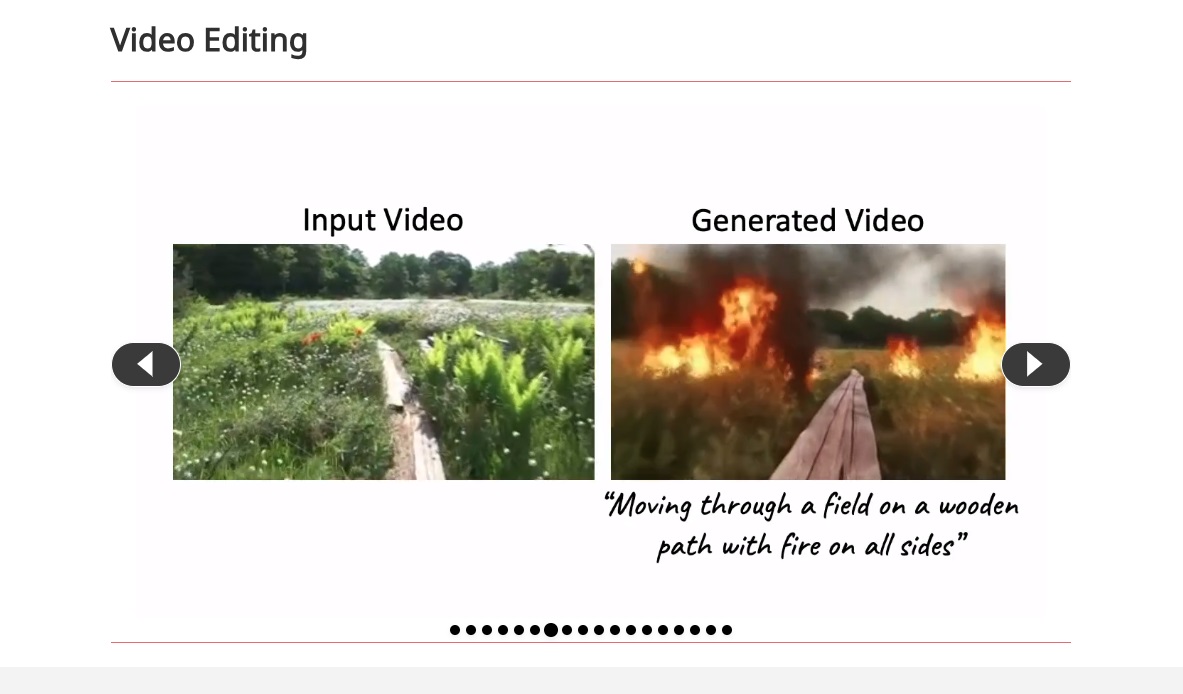Published on: July 5, 2023 Updated on: February 1, 2024
Dreamix AI Review 2024: What Is It, Review, And AI Use Cases
Author: Lianne Jones

What if you could generate animations using static images? Or add new visuals to videos by simply typing in what you want?
Dreamix is an AI-powered video editor that’s all set to take generative AI in a whole new direction. Its video diffusion model has been shown to generate videos from images and edit the visuals of videos using text-based prompts.
Dreamix isn’t publicly available. It was created by researchers and developers at Google Research and has so far been demonstrated online with its diffusion-based methods detailed in an accompanying research paper.
So it might be released as open-source software; it might not.
But since few generative AI apps are capable of producing what Google Dreamix has achieved, it’s well worth looking at this artificial intelligence technology and its potential to revolutionize the future of artificial intelligence.
Below, we review Dreamix’s capabilities and provide several use cases this AI technology can deliver as it continues to develop.
What is Dreamix?
Dreamix is a diffusion-based AI video generator that can create videos from images and edit video visuals using text prompts. It was created by developers at Google Research and demonstrated online in early 2023.
Dreamix review – what can Google Dreamix do?
It’s worth mentioning again that Dreamix is still a research project. It’s not a downloadable app and there’s no open-source software released just yet.
Despite that, Dreamix has been demonstrated online (in the video presentation and research paper, “Dreamix: Video Diffusion Models are General Video Editors”) to perform several powerful generative AI processes:
- Animate still images using text prompts
- Create AI generated videos from image inputs
- Modify existing videos with video editing tools
So if you’re interested in what Google Dreamix can do, we’ll take a closer look at the above in our review of Dreamix.
Dreamix image to video

Similar to AI animation tools, Dreamix can generate videos and animations from still images. But what’s interesting here is that it can also add animated objects to images, creating videos with visuals that do not exist in the original image.
Dreamix does this using a single image and a text-based AI prompt. The AI prompts can be used to animate a subject that’s present in the input image or add a new subject to the image complete with its own animation.
As an example (taken from the Dreamix website), Dreamix can take an image of a desert with the text prompt “A camel walking in the sand dunes” to generate a video of a walking camel superimposed onto the original image of the desert with most of the image information intact.
The text prompts can also be more in-depth description-wise, such as “Birds flying in the sky, camera is zooming out to reveal an American Buffalo bathing in the river”.
Either way, Dreamix appears capable of processing short and long text prompts to generate animated videos using images of landscapes or single subjects.
Dreamix subject-driven video generation

When fed multiple images of a single subject, Dreamix can take the subject and generate a video of it in motion based on an accompanying text prompt.
Compared with image-to-video generation, Dreamix’s subject-driven video generation is a more advanced process. The AI prompts have been shown to generate virtually any animation from image inputs, making this technology far more versatile.
An example taken from the Dreamix website uses six images of a teddy bear taken from different angles. With the prompt “A bear is drinking from a glass”, Dreamix generated an accurately presented animation of the teddy bear drinking water from a glass.
Another example shows the bear walking in a newly generated environment, using the same six images of the bear and the text prompt “A bear walking”.
So Dreamix’s subject-driven video generation is especially powerful as it can read multiple images of a given subject and omit any background visuals to generate an entirely original video based on different text prompts.
Dreamix video editing

Perhaps the most powerful capability of Dreamix is its ability to generate a new video based on an existing video. In this case, Dreamix can modify the video’s existing images or add new and original visuals to the inputted video.
Again, this is done through Dreamix’s trained diffusion model. Dreamix adds noise to the images to learn its general structure. Dreamix can then generate new images using this structure and an accompanying text prompt.
Dreamix has showcased examples of this process online, some of which we’ve listed and described below.
| Input video description | Text prompt | Output video description |
|---|---|---|
| A beach as the camera pans across the shore | “A beach with palm trees and swans in the water” | The generated video shows the same beach but with swans swimming in the water |
| A field as the cameraman walks on a central boardwalk | “Moving through a field on a wooden path with fire on all sides” | The generated video features a visually similar boardwalk and field with fires rising from the grass |
| A brown dog and white dog on a kitchen floor barking at the camera | “A brown cat and a white cat on the kitchen floor” | The generated video features the same backdrop but with a brown cat and white cat |
| A parked pickup as the camera pans around the truck | “An old pickup truck carrying wood logs” | The generated video displays the same visuals, except the bed of the pickup truck has a pile of logs |
| A man playing a saxophone | “A man playing a saxophone with musical notes flying out” | The generated video features animated musical notes moving around the saxophone |
So videos in Dreamix can be regenerated with superimposed subjects and brand new animations. The text prompts can also be used to generate realistic or non-realistic visuals, from “fire” to “flying musical notes”.
Dreamix AI use cases

Google’s Dreamix might not be available not to the public just yet, but there’s no doubt this new AI technology will bring a variety of uses and benefits.
So let’s take a look at the best AI use cases for Dreamix – how users can utilize this AI video editor for different purposes in the near future.
AI-assisted animation
Dreamix’s subject-driven video generation can be a useful tool for animators, both to inspire their animated work and generate basic object animations from scratch with little to no effort. In this way, animators can feed Dreamix images of a subject, such as an animal or character concept, then animate it using a variety of text-based prompts.
AI video editing
Dreamix can introduce a whole new arsenal of tools for video editors, especially video editors who work on creative and artistic videos that use VFX or CGI. As a result, Dreamix can be used as a source of creative inspiration or a useful AI tool for generating videos that can serve as drafts or concepts.
Animating old photos into videos
Since Dreamix can generate videos from static images, there’s no reason it can’t be used as an AI tool for animating old photos, such as photos of a deceased pet. In this case, users can bring old photos “to life” and even generate original animations from those photos using countless text prompts.
Conclusion
While image fidelity may still be an (expected) issue for Dreamix, one thing is for sure: it’s powerful at what it does and will certainly take generative AI up a level once the technology becomes more advanced and accessible.
This is thanks to powerful processes that can create animations from static images, generate entirely original videos using images of a single subject, and alter video visuals based on virtually any text prompt.
So far, generated videos demonstrated by the researchers at Dreamix show visual accuracy with regard to the input prompts and the ability to generate images and animations with believable realism.
All in all, Dreamix is definitely worth keeping an eye on. It’s already a powerful AI video editor and there’s no doubt that this developing AI technology will continue to advance.
Frequently asked questions
Is Dreamix available to use?
Dreamix is an AI video generator and research project that’s in development by Google Research. It was revealed and demonstrated in early 2023 but is not currently available to use as a web application or software app.
Who owns Dreamix?
Dreamix is an AI video editor created by researchers at Google Research. Using an advanced video diffusion model, Dreamix can animate still images, create original videos using images of a subject, and superimpose visuals onto existing videos.
Lianne Jones
TopApps writer
Recent Articles

In 2024, your smartphone camera is about to get a whole lot smarter. AI camera apps are transforming the way we capture and...
Read More
Learn how to use advanced search tools, newsletters, and reviews to uncover the perfect AI-focused podcast for you.
Read More
AI chatbot vs virtual assistant? who reigns supreme? We're dissecting the differences, strengths, and weaknesses, using data-driven insights.
Read More